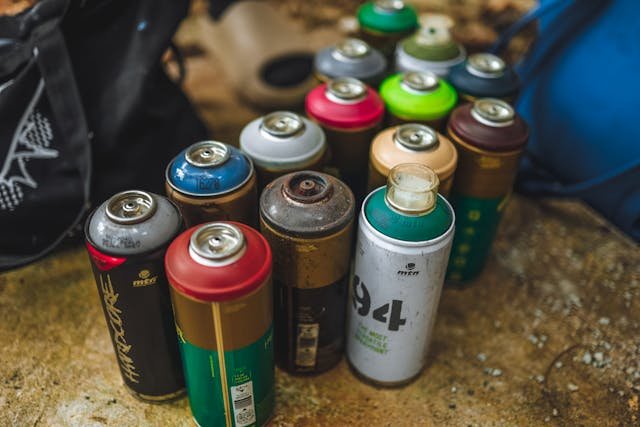Cardboard recycling plays a crucial role in reducing waste and preserving the planet’s natural resources. Each year, millions of cardboard boxes find their way into landfills, adding to the growing waste problem. But the good news is, cardboard is one of the easiest materials to recycle, making it a key component of eco-friendly waste management.
This guide will help you understand the complete cardboard recycling process, how to prepare materials like corrugated cardboard and cardboard packaging, and why participating in recycling programs matters. We’ll also cover common recycling mistakes and provide practical tips to make this process as smooth as possible.
By the end, you’ll know exactly how to recycle cardboard, contribute to a sustainable recycling stream, and reduce your household’s environmental impact.

Why Recycle Cardboard?
Recycling cardboard benefits the environment in many ways. Here are some key reasons to make sure those old pizza boxes and shipping boxes make it into the right recycling stream:
- Reduces Waste: Recycling helps keep cardboard out of landfills, extending the life of limited landfill space.
- Saves Natural Resources: Producing recycled paper from waste cardboard uses fewer raw materials, preserving trees and forests.
- Energy-Efficient: Recycling cardboard requires less energy compared to producing new materials from scratch.
- Supports Sustainability: Recycled materials like cardboard are used to make new products, completing the recycling loop and reducing the need for virgin resources.
- Financial Benefits: Many curbside recycling programs or drop-off locations make it convenient for individuals and businesses to recycle without extra expenses.
Preparing Cardboard for Recycling
Recycling cardboard successfully starts with proper preparation. Follow these steps to ensure your cardboard is ready for collection.
1. Remove Contaminants
- Ensure cardboard is clean and dry. Food-stained boxes, like greasy pizza boxes, may not be recyclable unless clean portions can be separated.
- Remove packaging materials such as foam inserts, bubble wrap, and plastic.
- Check for glass bottles or plastic bottles included as packaging and recycle these separately.
2. Flatten Boxes
- Flatten cardboard boxes to save space in your recycling bin. This also makes transportation to recycling facilities more efficient.
3. Sort Materials
- Separate cardboard from other recyclables like Office paper, plastic bottles, and fluorescent bulbs. This makes it easier for recycling facilities to process.
4. Check Local Guidelines
- Some recycling programs or drop-off locations accept specific types of boxes, such as corrugated cardboard or cardboard packaging. Others might have restrictions on items like shredded paper.
How Cardboard is Recycled
The process of recycling cardboard involves several key steps, ensuring the material can be reused to create new products. Here’s how a typical recycling stream works:
Collection
- Curbside recycling programs or curbside recycling carts collect cardboard from households and businesses.
- Many communities also offer drop-off locations where you can deposit flattened boxes, Recycled paper, and other materials.
Sorting
- At recycling facilities, cardboard is separated from other recyclables like rolls of paper, glass bottles, and shredded paper. This step ensures each material is processed correctly.
Shredding and Pulping
- The cardboard is shredded into small pieces and mixed with water to create a slurry. This process breaks down the fibers and prepares them for reuse.
Filtering and Cleaning
- Non-paper materials, such as tape or staples, are filtered out. Clean slurry ensures high-quality recycled materials.
Reformation
- The clean slurry is pressed and dried, forming large rolls of paper. These rolls are then sent to manufacturers to create new products like cardboard boxes, recycled materials, and Office paper.
Common Cardboard Recycling Mistakes
Recycling cardboard seems simple, but many people make mistakes that can disrupt the recycling process. Here are some common pitfalls and how to avoid them:
- Leaving Boxes Unflattened: Bulky boxes take up unnecessary space in recycling carts or bins. Flatten them to make recycling more efficient.
- Recycling Contaminated Materials: Greasy pizza boxes, wet cardboard, or heavily soiled boxes should not be recycled. Instead, compost clean portions if possible.
- Mixing Different Materials: Placing non-recyclable items like fluorescent bulbs or glass bottles in the stream can contaminate load shipments.
- Ignoring Curbside Recycling Guidelines: Each curbside recycling program has different rules. Always check what your local collection service accepts.
By avoiding these mistakes, you’ll support a cleaner, more effective recycling stream.
Cardboard Recycling Tips for Success
Here are some practical tips to make the most of your cardboard recycling efforts at home or work:
- Use a Recycling Cart or Bin: Designate a blue recycling cart or bin for all cardboard materials. Having a system makes recycling easier and more consistent.
- Label Your Bins: Separate bins for cardboard, plastic bottles, and Office paper ensure materials don’t mix.
- Participate in Community Programs: Many communities offer special events for materials like rolls of paper and shredded paper. Check for options in your area.
- Choose Recyclable Packaging: When buying products, opt for items in cardboard packaging or other recyclable materials. Support brands committed to sustainability.
Benefits of a Complete Cardboard Recycling Process
When you recycle cardboard properly, the positive impacts extend far beyond your household. Here’s how a complete cardboard recycling process contributes to a healthier planet:
- Improves Manufacturing Efficiency: Recycling creates rolls of paper and other materials used to produce new cardboard boxes, reducing the need for raw resources.
- Lower Carbon Footprint: The energy savings from recycling mean fewer greenhouse gas emissions compared to producing virgin materials.
- Builds a Circular Economy: Items like cardboard packaging and Recycled paper are essential for a sustainable production system.
- Supports Job Growth: Recycling programs and facilities create jobs that support local economies and promote sustainability.
How Businesses Can Get Involved
Businesses, too, can take significant steps toward better cardboard recycling. Many offices generate waste like corrugated cardboard, shredded paper, and Office paper, which can all be recycled. Here are ways businesses can participate:
- Set Up Recycling Stations: Install clearly labeled recycling bins for cardboard, glass bottles, and plastic bottles.
- Partner with a Local Program: Collaborate with curbside recycling programs or recycling facilities to manage waste efficiently.
- Educate Employees: Train staff on the importance of recycling and the separation of cardboard from other materials.
Conclusion
Recycling cardboard is one of the easiest and most impactful ways to reduce waste and promote sustainability. By understanding the process, preparing your cardboard correctly, and participating in local recycling programs, you can make a meaningful difference. Whether it’s corrugated cardboard from deliveries or pizza boxes from dinner, every box recycled is a step toward a greener planet.
Start today by flattening those cardboard boxes, separating them from other recyclables, and placing them into your blue recycling cart or at drop-off locations near you. Together, we can create a cleaner, more sustainable future one recycled box at a time.

Anamika is a passionate writer for Eco365Store.com, specializing in topics that inspire a cleaner, greener world. With expertise in home cleaning, recycling, and eco-friendly solutions, she crafts engaging and informative articles that help readers adopt sustainable practices in their daily lives.

